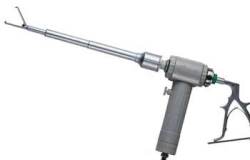Top Class Actions’s website and social media posts use affiliate links. If you make a purchase using such links, we may receive a commission, but it will not result in any additional charges to you. Please review our Affiliate Link Disclosure for more information.

Power morcellators, instruments used to remove tissue through small surgical holes by grinding it into pieces, have recently come under fire within the American medical community due to the high rates of morcellation cancer in women who underwent laparoscopic morcellation to remove their uterus or fibroids.
During the last year alone, 191,000 hysterectomies were performed in the United States using some type of robotic assistance, according to Intuitive Surgical Inc., the manufacturer of the popular da Vinci surgical robot. The advantage to robotic surgery is that the robot instruments can work in even smaller spaces than a doctor’s hands and instruments during laparoscopic (or key-hole) surgery.
By using robotic assistance to perform surgery in small incisions, hysterectomy patients do not need to undergo open surgery and generally experience faster recovery.
The U.S. Food and Drug Administration (FDA) approved robotic surgery for hysterectomies in 2005, and since then the sales of power morcellators continued to increase as the demand by patients and doctors for laparoscopic morcellation surgery continued to grow. However, since a 2013 FDA morcellation cancer safety warning, the power morcellator market has begun to wane.
The FDA adverse product warning regarding power morcellators stated that the use of morcellation to remove a uterus or uterine fibroids can increase the risk or increase the stage of a cancer diagnosis.
According to the American College of Obstetricians and Gynecologists, using surgical robots to perform routine hysterectomies does not improve the overall outcome of the surgery. In the organization’s estimation, a vaginal hysterectomy is the best option for most women.
Thousands of female patients who developed uterine cancer after undergoing a laparoscopic morcellator surgery have filed morcellator cancer lawsuits and many more are expected to file or join morcellator cancer class action lawsuits against the medical manufacturers of power morcellators.
Do YOU have a legal claim? Fill out the form on this page now for a free, immediate, and confidential case evaluation. The morcellation cancer attorneys who work with Top Class Actions will contact you if you qualify to let you know if an individual lawsuit or class action lawsuit is best for you. [In general, morcellator cancer lawsuits are filed individually by each plaintiff and are not class actions.] Hurry — statutes of limitations may apply.
ATTORNEY ADVERTISING
Top Class Actions is a Proud Member of the American Bar Association
LEGAL INFORMATION IS NOT LEGAL ADVICE
Top Class Actions Legal Statement
©2008 – 2024 Top Class Actions® LLC
Various Trademarks held by their respective owners
This website is not intended for viewing or usage by European Union citizens.
Get Help – It’s Free
Join a Free Morcellation Cancer Class Action Lawsuit Investigation
If you or a loved one were diagnosed with cancer in the uterus, pelvis or abdomen within two years of undergoing surgery for a myomectomy (removal of fibroids), hysterectomy (removal of the uterus), oophorectomy (removal of the ovaries), or salpingectomy (removal of fallopian tubes), you may have a legal claim. See if you qualify by filling out the short form below.
An attorney will contact you if you qualify to discuss the details of your potential case at no charge to you.
Oops! We could not locate your form.












